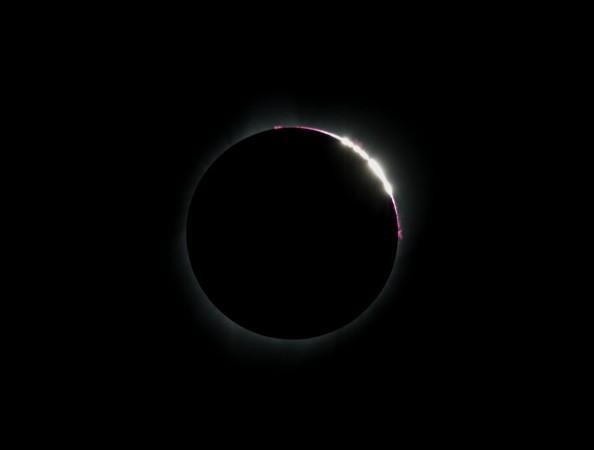
The sun, moon and Earth will align perfectly on Tuesday, July 2, during the first solar eclipse since the 'Great American Eclipse' of 2017.
The full eclipse, which will last four minutes and 33 seconds, will only be witnessed over the southern Pacific Ocean and South America. Neighbouring countries will be able to see a partial eclipse, reports space.com.
What is a solar eclipse?
When the moon crosses path with the sun, it temporarily blocks Earth's view of the sun. The moon casts its shadow and a portion of the planet then plunges into totality for a few seconds, or minutes.
The once-in-18-months-event has two types -- partial and total eclipse. The latter attracts widespread attention. Unlike a partial solar eclipse, where the moon obstructs the sun's path half-way, a total solar eclipse is when the moon obstructs the sun's view and casts a 'ring of fire' like illumination around it.
When will it happen?
The eclipse will begin at 12:55 pm EDT, which is 10:25 pm IST (Indian Standard Time). Since it will occur during the night, India will not be able to witness the celestial event. However, people from around the world can watch the eclipse through the live stream link on NASA TV.
Where will it take place?
La Serena in Chile will be the first place to witness the total solar eclipse and south of Buenos Aires, Argentina will be the last place to see the celestial spectacle. Totality will be for two-and-a-half minutes while the rest of the continent will experience a partial solar eclipse, according to Accuweather.
What will be its effects?
The eclipse will cause a drop in the earth's temperature. Scientists have said that temperatures may drop by over 20 °F (12 °C). Apart from temperature, the skies will darken and more stars and planets will be visible than before.
Why is solar eclipse important for science?
Since this will be twice the duration of the 2017 solar eclipse, the astronomical event is seen as one of the most anticipated events for scientific discovery.
Solar eclipses help scientists study the Sun's inner regions of its corona from the earth. Observations regarding Sun's magnetic field, coronal temperature, composition, density, elements as well as ions and molecules that get charged and produce emission lines are studies to know more about the sun.

















